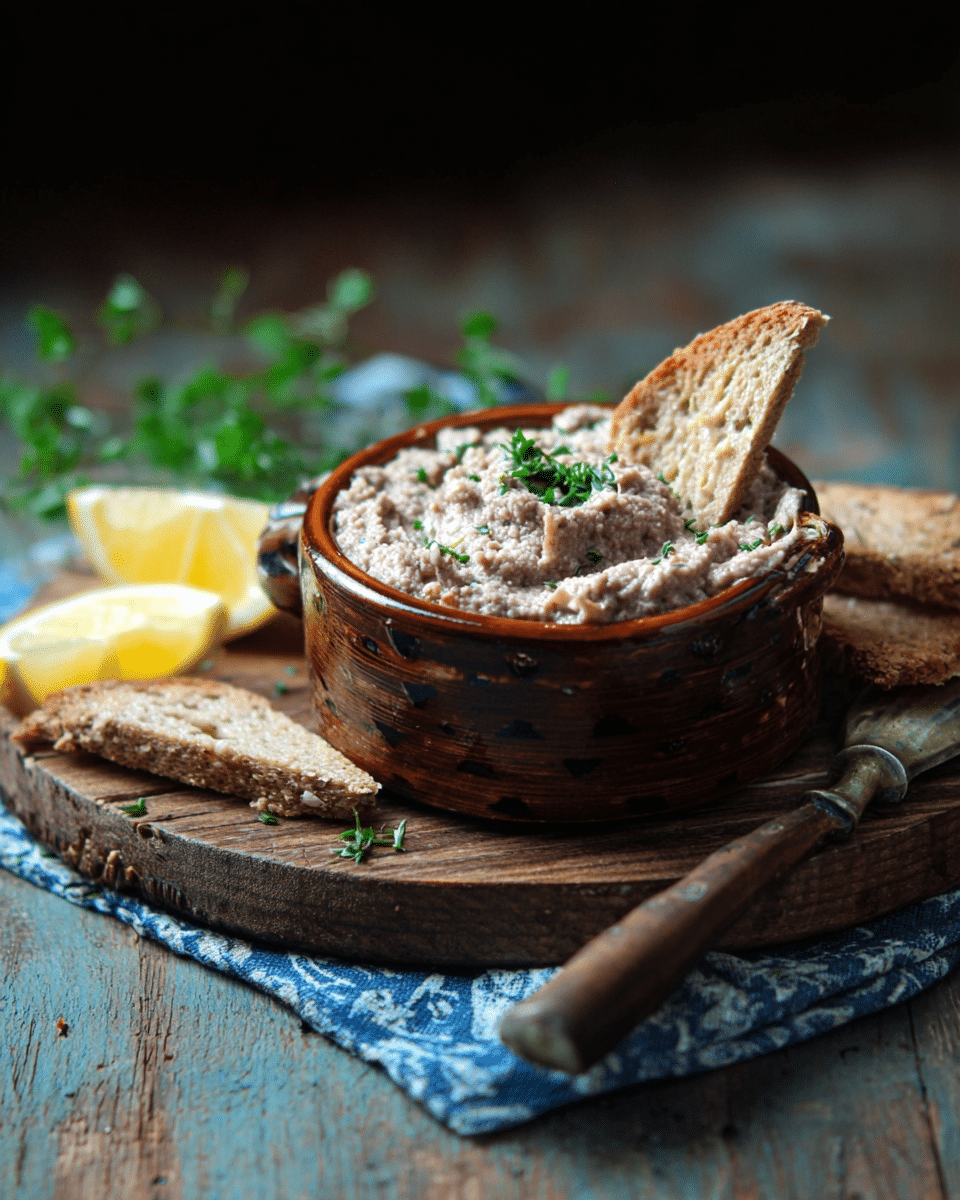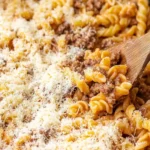A beloved Jewish holiday classic, our Chopped Chicken Liver Spread combines old-world flavors with comforting textures, perfect for starting your Rosh Hashanah meal. A silky, savory spread made from tender chicken livers, slow-caramelized onions, and creamy hard-boiled eggs, seasoned to perfection. This timeless Rosh Hashanah appetizer carries the warmth of tradition in every bite.
This spread is more than just food it’s a bridge to tradition, making appearances at family gatherings, holiday feasts, and festive celebrations. Whether served with rye bread, crackers, or fresh vegetables, it’s the perfect centerpiece for your appetizer spread. Its timeless appeal makes it a cherished favorite, blending nostalgia with gourmet indulgence.
Full Recipe
Ingredients:
-
1 pound chicken livers, trimmed and cleaned
-
3 tablespoons schmaltz (rendered chicken fat) or unsalted butter
-
2 medium onions, thinly sliced
-
3 hard-boiled eggs, peeled and chopped
-
1 teaspoon kosher salt, or to taste
-
1/2 teaspoon freshly ground black pepper
-
1 teaspoon brandy or cognac (optional, for depth of flavor)
-
Fresh parsley, chopped, for garnish
-
Rye bread or crackers, for serving
Directions:
-
Heat 2 tablespoons of the schmaltz (or butter) in a large skillet over medium heat.
-
Add the sliced onions and cook, stirring occasionally, until deeply caramelized and golden brown, about 20–25 minutes. Remove from skillet and set aside.
-
Add the remaining schmaltz to the skillet. Increase the heat to medium-high and add the chicken livers. Sear for about 2–3 minutes per side, until browned on the outside but still slightly pink inside. Do not overcook.
-
Remove the livers from the heat and let cool slightly.
-
In a food processor, combine the chicken livers, caramelized onions, hard-boiled eggs, salt, pepper, and brandy (if using). Pulse until desired texture is reached — smooth or slightly chunky.
-
Taste and adjust seasoning.
-
Transfer to a serving bowl, garnish with parsley, and chill for at least 1 hour before serving.
-
Serve with rye bread or crackers for the perfect appetizer.
Prep Time: 15 minutes | Cooking Time: 30 minutes | Total Time: 45 minutes
Kcal: 220 kcal | Servings: 6 servings
A Traditional Rosh Hashanah Favorite: Chopped Chicken Liver Spread
For many Jewish families, Rosh Hashanah the Jewish New Year is a time of reflection, renewal, and reunion. Beyond its spiritual significance, it’s also a holiday steeped in culinary traditions that carry deep cultural meaning. Among the many dishes that grace the holiday table, one appetizer consistently stands out for its nostalgic charm and rich flavor: Chopped Chicken Liver Spread.
Smooth, savory, and deeply satisfying, this humble yet elegant spread has earned a place not only on Rosh Hashanah menus but also in the collective memory of generations. It is a dish that bridges the gap between the past and the present, uniting families through taste and tradition.
A Dish with History
Chopped chicken liver has roots deeply embedded in Ashkenazi Jewish cuisine. For centuries, it was a staple in Jewish households across Eastern Europe, particularly because it made use of humble, accessible ingredients. Chicken livers were often available even in times of hardship, making them a resourceful choice for cooks who wanted to prepare something hearty and nourishing.
As Jewish immigrants arrived in America in the late 19th and early 20th centuries, they brought their culinary traditions with them. Delicatessens in cities like New York became the unofficial keepers of these recipes, serving chopped chicken liver alongside rye bread, bagels, and pickles. Over time, the dish transitioned from everyday fare to a cherished holiday specialty.
Why It Belongs on the Rosh Hashanah Table
Rosh Hashanah meals often focus on foods that symbolize prosperity, health, and sweetness for the year ahead. While chopped chicken liver may not carry the same symbolic sweetness as apples dipped in honey, it represents something equally important heritage and connection.
Many families serve it as the first course, setting a warm and inviting tone for the meal. The richness of the liver, paired with the gentle sweetness of caramelized onions, creates a flavor profile that feels celebratory without being overly elaborate. It’s a dish that encourages lingering at the table, passing plates, and sharing stories.
The Role of Schmaltz in Tradition
One of the defining characteristics of an authentic chopped chicken liver recipe is the use of schmaltz rendered chicken fat. Beyond adding incomparable flavor, schmaltz is a culinary symbol in Jewish cooking, reflecting a philosophy of using every part of the bird and wasting nothing.
For Rosh Hashanah, using schmaltz adds another layer of tradition to the dish. It transforms the spread from simply “delicious” to “authentically rooted,” echoing the flavors that grandparents and great-grandparents would have prepared in their own kitchens. While some modern recipes swap schmaltz for butter or oil, purists will tell you that schmaltz is what gives the dish its soul.
Texture and Flavor: The Art of Balance
One of the reasons chopped chicken liver has such staying power is its versatility in texture and taste. Some families prefer it smooth and mousse-like, while others insist on a coarser, chunkier consistency that gives the dish more rustic character.
Flavor balance is equally important. The mild bitterness of the liver is tempered by the sweetness of caramelized onions and the richness of egg. A hint of black pepper adds warmth, while optional touches like a splash of brandy or a sprinkle of fresh herbs can elevate it into something fit for a holiday feast.
For Rosh Hashanah, many cooks lean toward a slightly more refined preparation smoother blending, careful seasoning, and artful presentation. It’s a way of honoring the dish while making it worthy of the year’s most important dinner.
Serving Traditions
Chopped chicken liver is most often served as a starter or part of an appetizer platter. At Rosh Hashanah, it’s typically paired with slices of rye bread, challah, or sturdy crackers. Garnishes like chopped parsley, thinly sliced onions, or even pomegranate seeds can make it more visually appealing while adding complementary flavors.
Some hosts like to present it family-style in a large serving dish, allowing guests to help themselves. Others prefer individual ramekins for a more elegant touch. Either way, it’s a dish that invites conversation guests often share memories of who made it best in their family, or debate the merits of schmaltz versus butter.
Health Considerations and Modern Variations
While traditional chopped chicken liver is rich and indulgent, some modern cooks have adapted the recipe to suit different dietary needs. For example:
-
Lower Fat Versions: Using olive oil instead of schmaltz, or reducing the amount of egg yolk.
-
Vegetarian Adaptations: Substituting mushrooms and walnuts for liver to mimic the texture and richness.
-
Lighter Seasoning: Reducing salt for those watching sodium intake.
That said, many still embrace the original recipe for holiday meals, viewing it as a once-a-year indulgence worth savoring.
Cultural Resonance Beyond the Holiday
Though closely associated with Jewish celebrations, chopped chicken liver has crossed cultural boundaries. In fine dining, it’s sometimes reinterpreted as “rustic pâté” or “liver mousse,” served with artisan breads and pickled vegetables. But no matter how it’s dressed up, for those who grew up with it, the dish remains deeply tied to family and faith.
For Rosh Hashanah, its presence on the table is more than culinary it’s emotional. It connects generations, preserves tradition, and reminds everyone that food is a vessel for memory.
Pairing Ideas for a Rosh Hashanah Menu
If you’re planning to include chopped chicken liver on your Rosh Hashanah table, it works beautifully alongside:
-
Round Challah: Symbolizing the cycle of the year and continuity.
-
Pickled Beets or Cucumbers: Adding a tangy counterpoint to the richness of the spread.
-
Apples and Honey: A sweet contrast that balances savory notes.
-
Gefilte Fish: Another traditional starter that complements liver in a multi-course meal.
Pairing the spread with wine is also an option a light, slightly acidic white wine like Sauvignon Blanc or a dry Riesling can balance the richness.
Why This Dish Endures
In an age of ever-changing food trends, the continued popularity of chopped chicken liver is remarkable. It’s a testament to the power of tradition and the role food plays in cultural identity. While it might not be flashy or modern, it offers something far more valuable a sense of belonging.
At Rosh Hashanah, when families gather to mark both endings and beginnings, this dish serves as a reminder of continuity. Just as the round challah symbolizes the cyclical nature of life, chopped chicken liver represents a thread unbroken, tying today’s celebration to those of generations past.
Conclusion:
Chopped Chicken Liver Spread is more than a recipe; it’s a piece of living history. For Rosh Hashanah, it offers a perfect blend of flavor, tradition, and memory. It’s the kind of dish that sparks conversations, invites reminiscence, and reminds us that the meals we share are as important as the prayers we recite.
Whether you serve it exactly as your grandparents did or put your own spin on it, this spread holds a rightful place at the holiday table. It’s a taste of heritage, a celebration of togetherness, and a delicious way to start the Jewish New Year.
By honoring the recipe, you’re not just preparing an appetizer you’re keeping a tradition alive, ensuring that the flavors of the past continue to enrich the future. And that, perhaps, is the sweetest way to welcome a new year.






